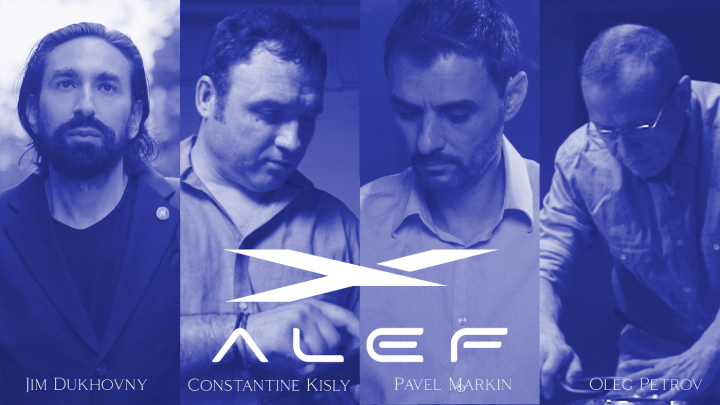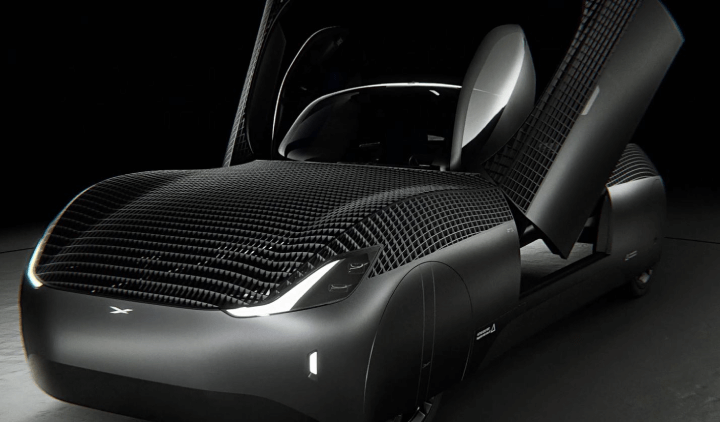Alef Aeronautics: Pioneering the World's First Real Flying Car
In The News | 12-07-2023 | By Robin Mitchell
Recently, the Federal Aviation Administration (FAA) approved Alef Aeronautics flying car, making it the first in the world to receive such approval. What challenges would a flying car face, what exactly does the FAA approval mean, and are such systems practical?

Flying car – The challenges they face
Despite what Back to The Future predicted about the future of transportation, the idea of a flying car is still one of fantasy. While some attempts have been made to bring such a vehicle to life, they are often plagued with issues, and not just technical ones (some legislation restricts what can fly, where things can fly, and the technology they use).
To make a car fly, the first challenge that engineers have to solve is the ability to have a vehicle have both wheels suitable for roads and a propulsion technology capable of lifting the vehicle off the ground. While wheels already exist in planes, these are designed for runways and not for road driving. Furthermore, planes are extremely large and don’t retract their wings or engines when on the ground. It is perfectly possible to have the wheels of a car retract into the body. The sheer weight of road wheels, combined with the need to have a strong structure, makes this extremely difficult to achieve.
Providing propulsion can be done with jet engines, but their high production cost, fuel consumption, and noise make them impractical for use in a flying car that may go near pedestrians (also considering that jet engines are a massive fire risk). One option around this is to utilise high-speed electric fans (likely ducted) and take advantage of vertical take-off, but this requires extraordinary amounts of electrical power.
On the problem with power, an EV-based flying car would need large internal batteries to provide the power needed to lift the vehicle off the ground. However, lithium batteries (the only viable technology currently available) are extremely heavy and volatile and don’t reduce their weight when used. This results in extremely low efficiencies, thereby making a flying EV entirely impractical.
It is possible for an EV flying car to have retractable wings that provide a degree of lift when in use. This would reduce the energy needed to keep the vehicle in the air significantly, but this introduces challenges with safety, especially in dense urban environments. For these issues alone, flying cars are still on the drawing board.
"During one of the Science Fiction lectures, Jim Dukhovny talked about how flying cars are finally possible in 2015. But he lacked technical skills to take on such a complicated task by himself. So, in several weeks four friends met at a Coupa Cafe in Palo Alto: Dr. Constantine Kisly, Pavel Markin, Oleg Petrov, Jim Dukhovny - each a technical genius. The first real flying car was drawn on a napkin in a cafe. It was assumed it would take about 6 months to build one. Boy, was this an underestimate. The constraints were: it has to be a real car (driving in driving lanes, parking in parking spaces), it has to have a vertical takeoff (otherwise it is not a real flying car), it has to be affordable for most people (not just the rich)." - Alef's Story
Flying car awarded a certificate from FAA to fly
Recently, an aeronautic company called Alef has been awarded a certificate from the FAA on their developmental flying car that would allow the car to be flown. However, despite the hysteria surrounding the announcement, this certificate only allows for controlled flights in specific locations.

The doors of the Alef Model A swing open.
According to Alef Aeronautics, their developmental vehicle is a low-speed car capable of travelling up to 200 miles while also being able to fit in a garage. When used as an aerial vehicle, it is claimed to have a range of up to 110 miles, providing vertical take-off and landing.

A Bird's Eye View of the Alef Model A
To achieve aerial capability, instead of trying to build a car that can fly, the design is more akin to a quadcopter with a thin frame that makes the vehicle look like a car. This significantly reduces the weight of the system, thereby reducing the power requirements. When in flight, the car tips on its side, and the cabin of the vehicle is stabilised via a rotating gimble, eliminating the challenges of angled flight.
As reported by Aviation Week, Alef Aeronautics' Model A takes an unconventional approach to the design of a vehicle that can both drive on the road and take off and land vertically. The Model A's multiple propellers are fully enclosed within the body, with air flowing through the mesh upper surface, contributing to its unique design and functionality.
While customers can pre-order their own vehicle for around $300,000, the vehicle is still in its early days. But with the approval from the FAA to test the car’s capabilities, there is a very real chance that this design could create a whole new industry of flying vehicles.
According to Alef Aeronautics, they are committed to designing and developing the world's first real flying car, aiming to revolutionise how we move around. This ambition is reflected in their ongoing efforts to improve and test their flying car.
As highlighted by BBC News, Alef Aeronautics has received limited US approval for test flights, marking a significant milestone in the development of flying cars. This approval allows Alef to further test and refine their flying car, bringing us one step closer to the reality of flying cars.
"After Draper had made a modest initial investment, “I put more (money in) when I saw that they had created a small drone prototype that did exactly what they told me it would do,” he said in an email. “The design is extraordinary. The sides of the car become the wings when the plane goes horizontal.” - Tim Draper, an early investor in Elon Musk's Tesla Inc and SpaceX whose Draper Associates Fund V has backed Alef with $3 million in seed money."[Nasdaq]
Are such systems practical?
Even if the company can demonstrate their car flying, it doesn’t mean that such vehicles are practical. Ignoring the energy concerns faced with such a vehicle, the safety aspect alone could outright prevent such vehicles from ever being owned by the public. Anything with sufficient mass that can fly around presents a very real danger for those in the vehicle and those on the ground, thus, turning a flying car into an ideal weapon of terror.
If such a vehicle was commercialised, it would almost definitely require a pilot’s license. Such a vehicle could easily be taken off course and flown anywhere, and should it fail during mid-flight over an urbanised area, the resulting catastrophe could be severe.
Will this vehicle actually work in practice? Probably under test conditions, but could it become a new mode of transport? Not likely, I say.
While the concept of flying cars has been a part of our collective imagination for decades, the practical implementation of such a technology is fraught with challenges. The Alef Model A, however, is a testament to human ingenuity and the relentless pursuit of innovation. It's a bold step towards a future where the sky is not the limit but a new frontier. Yet, it's important to temper our excitement with a dose of reality. The road (or rather, the flight path) to the widespread adoption of flying cars is still long and filled with regulatory, technical, and societal hurdles. As we stand on the precipice of this new era in transportation, we must ensure that the decisions we make are not just about feasibility but also about the safety, sustainability, and equity of this new mode of transport. Only then can we truly embrace the promise of flying cars?

